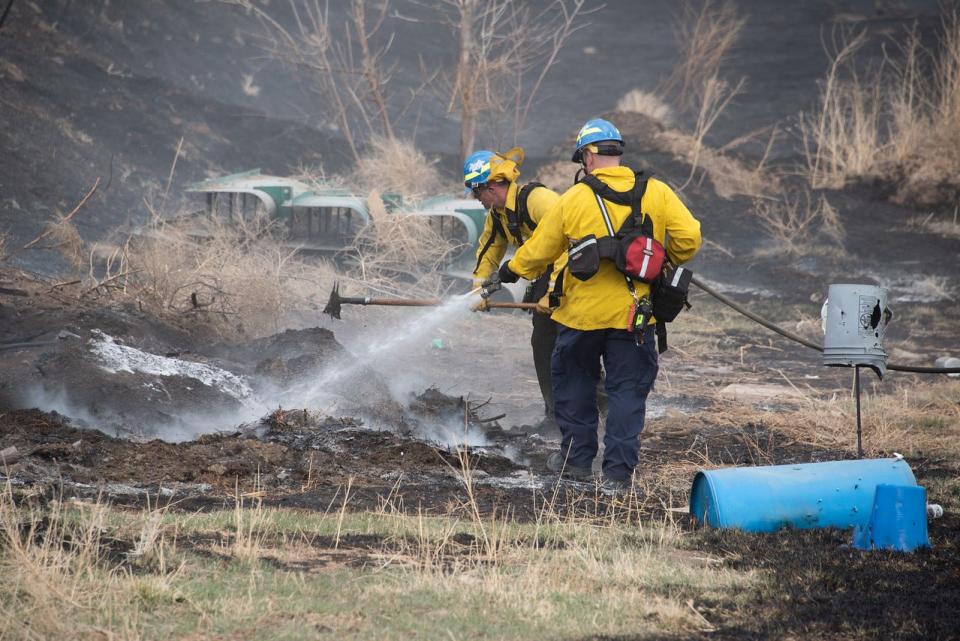Water worries: With absent April showers, are we in trouble?
Grass fires are spotting around the state, national forests and counties have issued fire restrictions and statewide snowpack is well below average. All this in the midst of our "wet'' season.
Thanks, April.
A persistent windy and dry weather pattern this month has greatly exacerbated fire concerns and water availability (see Horsetooth Reservoir's outlook below) for farmers and municipalities.
So if May and June, two of our wettest months, also don't live up to their billing, are we in trouble?
"I don’t want to sound all doom and gloom, but many areas are in a pretty concerning situation right now,'' said Becky Bolinger, assistant state climatologist. "May can make or break a drought. If we don't get rain in May, it will be brutal, feeding into a very rough summer. A couple of great soakers would greatly help the recovery. Maybe in May the switch will flip.''

Here are just a few of the lowlights:
Poudre Fire Authority has responded to 22 grass fires this year.
Fort Collins has received 0.10 inches of precipitation this month. If we don't receive any more by the end of the month — Saturday — it will be the driest April since 1925 and tied for second driest on record.
Fort Collins recorded its fifth-windiest 10-day period this month since record-keeping in 1992. Holyoke on the Eastern Plains had its windiest stretch.
Fort Collins has had 18 years in which there was no measurable snow in April. The last time was 2012, the year of a significant drought and the High Park Fire.
April 21 saw the National Weather Service issue a rare "extreme'' fire danger warning for the Eastern Plains.
The National Weather Service in Pueblo issued a record 19 red flag warnings across southern Colorado in April alone.
Colorado wildfire help: Millions in funds, new office will combat threat
Why is Colorado so windy and dry, and is there relief in sight?
April is one of our windiest months and also generally one of our wettest months.
An unusually strong jet stream has stagnated over the state. That has continually kept the spring storm track just to the north of Colorado — into Wyoming, Nebraska and the Dakotas — and leaving us with windy, dry conditions on the back side of those storms, according to Scott Entrekin, a meteorologist at the National Weather Service in Boulder.
He said Colorado is still feeling some effects from a La Nina that has been present the last two years and typically results in drier and windier than normal conditions. He said predictions are for a weak La Nina influence through the summer.
"May can be a pretty active month, but if we go dry in May, we are in trouble,'' he said.
How has snowpack fared and how will that impact our reservoirs?
Statewide snowpack as of Thursday was 82%, according to the Natural Resources Conservation Service's Colorado office.
However, there is a great divide between north and south, with the five northernmost basins all at 87% or more and the three southern basins at 63% or less.
The South Platte Basin, which includes Fort Collins and Denver, is at 88%.
The bad news is we just reached the snowpack threshold when, on average, more snow starts melting than accumulating, so what you see is what you get. However, Bolinger said the northern mountain snowpack has been melting slowly thanks to cool temperatures while the southern mountains have melted quickly, which increases the wildfire risk.
The good news is Horsetooth Reservoir and Carter Lake are 95% full, according to Jeff Stahla, Northern Water spokesperson.
Stahla said water was moved to fill those sites this winter in case Fort Collins and Greeley need to exclusively pull from Horsetooth Reservoir in the event debris from the Cameron Peak Fire makes Poudre River water unusable.
He said the Northern Water board decided on a 70% water quota for its Colorado-Big Thompson Project users this year, which quantifies the amount of water made available to allottees. He said that is about average and the percentage can change as needs arise.
"The board is being conservative now but the system is prepared to extend water resources in case we have several dry years,'' Stahla said. "In 2002 and 2012 we had some pretty dry years, but we are far away from that right now.''
Maps: See where wildfires are burning in the region
Reporter Miles Blumhardt looks for stories that impact your life. Be it news, outdoors, sports — you name it, he wants to report it. Have a story idea? Contact him at milesblumhardt@coloradoan.com or on Twitter @MilesBlumhardt. Support his work and that of other Coloradoan journalists by purchasing a digital subscription today.
This article originally appeared on Fort Collins Coloradoan: Colorado's dry conditions in April could be trouble if it continues

